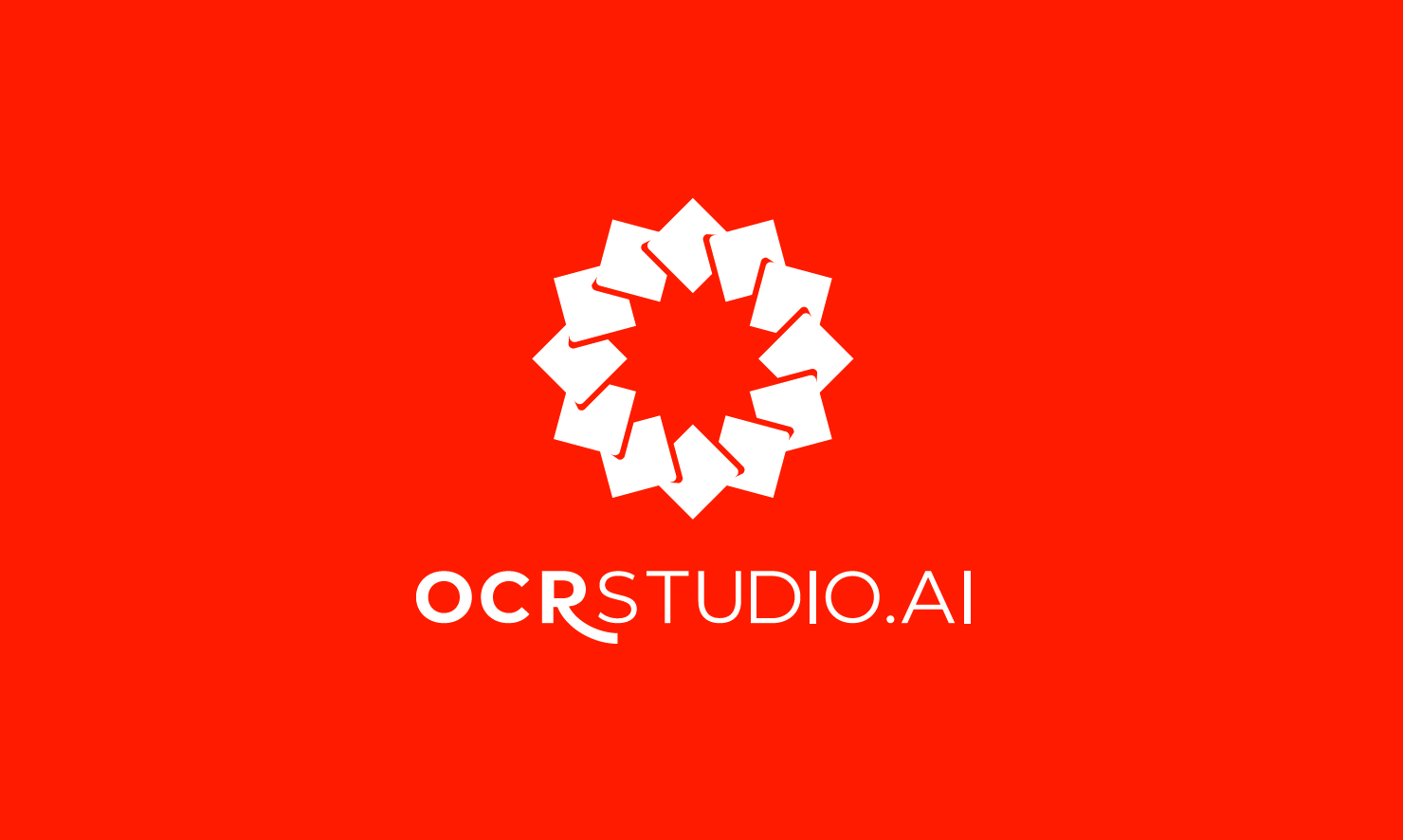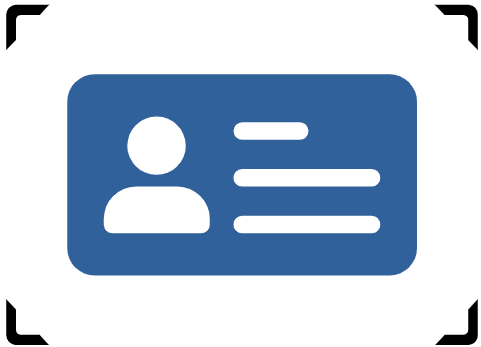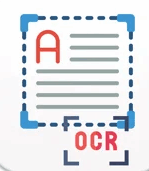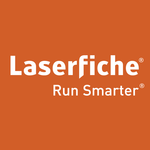What Is OCR Software?
OCR (Optical Character Recognition) software transforms scanned photos or printed documents into editable and searchable text. It employs advanced recognition algorithms to recognize and extract text from images or documents, allowing it to be edited, saved, and shared in a variety of formats. This software is useful for purchasers who frequently deal with physical papers and require a more efficient way to digitize and manage them.
It avoids the laborious and time-consuming chore of manually typing out the material, enhancing efficiency and precision. OCR software is adaptable and can recognize a variety of languages and typefaces, making it appropriate for a wide range of industries and professions. This program has numerous applications, ranging from healthcare to publishing, legal to education, and can save corporations significant time and resources.
Some OCR software has extra functions including PDF conversion, batch processing, and support for numerous file types. These add-ons can significantly improve the software's usability and make it a worthwhile investment for businesses of any size. When selecting OCR software, consumers should evaluate variables such as accuracy, language support, device compatibility, and general usability. They should also evaluate their individual demands and select software that meets those criteria in order to obtain the best value for their money.
What Are The Recent Trends In OCR Software?
Recent technological breakthroughs have significantly increased the capabilities and functionality of OCR (optical character recognition) software. OCR software has become an essential tool for precise and efficient data processing, especially in data-intensive areas like banking, healthcare, and education.
In this buyer's guide, we'll look at the latest trends in OCR software to help you understand and select the best option for your individual requirements.
1. Advanced Character Recognition Techniques: OCR software has progressed from basic character recognition to more sophisticated techniques like vector-based OCR and deep learning-based OCR. These methods use artificial intelligence and machine learning algorithms to correctly understand complex fonts, symbols, and handwriting, resulting in increased accuracy and fewer errors.
2. Multi-language Support: With the global expansion of enterprises, the necessity for OCR software that supports different languages has grown. Recent advancements in OCR software have centered on enhancing multi-language capabilities, allowing users to scan and process documents in a variety of languages, including non-Latin alphabets.
3. Cloud-Based OCR Solutions: Cloud-based OCR solutions have grown in popularity in recent years because to their ease of use, scalability, and low cost. This trend enables customers to use OCR software via a web browser, removing the requirement for on-premise installation and maintenance. Furthermore, cloud-based OCR solutions are easily integrated with other software systems, making them an attractive option for enterprises of all sizes.
4. Mobile OCR: Another notable trend in OCR software is the creation of mobile applications with OCR capabilities. Mobile OCR allows you to scan, process, and digitize documents on the move with your smartphone or tablet. This trend is especially beneficial for remote and mobile workers who must process documents without access to standard desktop scanning machines.
5. Automated Data Extraction: OCR software has evolved beyond its original purpose of translating photos to text to include automatic data extraction features. With the evolution of OCR technology, users can now extract data from scanned documents and forms, reducing the time-consuming and arduous process of manually entering data. This tendency has resulted in much higher data accuracy, efficiency, and production.
Benefits Of Using OCR Software
OCR (Optical Character Recognition) software is an effective tool for converting printed or handwritten documents into editable and searchable digital files. This breakthrough technology has transformed how we organize, save, and retrieve documents, making it an indispensable tool for organizations, academics, and individuals alike.
Let's look at the benefits of using OCR software and why it's a must-have for any firm.
1. Saves Time And Increases Efficiency: The primary benefit of using OCR software is that it eliminates the need for human data entry. Manually typing out papers may be time-consuming, particularly when working with big amounts of data. OCR software can scan and analyze documents in seconds, saving you time and improving overall efficiency. This increase in productivity enables employees to focus on more important activities rather than tedious data entering.
2. Minimizes Human Error: Another key advantage of OCR software is its accuracy. Manually entering data might result in human errors, which can be costly to enterprises. OCR software ensures an accurate and error-free process, reducing the possibility of blunders. Furthermore, the program can handle vast amounts of data without tiring or making mistakes, making it a dependable tool for firms dealing with a big volume of papers.
3. Improves Document Organization And Accessibility: OCR software makes organizing and accessing documents much easier. The software can transform physical papers into searchable and editable digital files, making it easier to locate and retrieve information fast. This function is especially useful for organizations who deal with a lot of paperwork and need to find specific information quickly. With OCR software, you can access all of your papers with a few clicks, eliminating the need to manually search through physical files.
4. Cost-Effective Solution: Investing in OCR software is less expensive than hiring a data entry workforce. The program is a one-time investment that gives long-term advantages, greatly lowering the overall cost of data administration. Additionally, increased efficiency and production can lead to cost savings for enterprises.
5. Supports Digital Transformation: In today's digital world, organizations must keep up with the latest technology and adapt to the digital transformation. OCR software enables businesses to turn physical documents into editable digital files, thereby facilitating the move to a paperless environment. This not only saves resources, but also encourages a more environmentally conscious approach to document management.
Important Factors To Consider While Purchasing OCR Software?
When it comes to choosing OCR (Optical Character Recognition) software, there are a few crucial elements to consider to ensure that you make the greatest option for your requirements. OCR software converts scanned photos or printed documents into editable and searchable text, making it a useful tool for both businesses and individuals.
Before making a purchase, consider the following things to ensure that you get the most out of your money.
1. Accuracy And Recognition Quality: One of the most important considerations when selecting OCR software is its accuracy and recognition quality. The primary goal of OCR software is to accurately transform photos into editable text, so it is critical to select software that produces high-quality results. Choose software with advanced recognition technology and a high accuracy rate to ensure that your converted documents are error-free.
2. Language Support: Another significant consideration is the language support of the OCR software. Depending on your requirements, you may need software that can recognize multiple languages. Make sure to check the software's language compatibility before purchasing to avoid future limits.
3. OCR Output Formats: Different OCR software provides several output formats for your converted documents. Some may just supply editable text, whilst others may include PDF, HTML, or other forms. Consider your individual requirements and select software that supports the necessary output formats to get the most out of your investment.
4. Integration With Other Software: Integration features are very important to consider when selecting OCR software. If you intend to utilize the software with other programs or tools, ensure sure it is compatible and easy to integrate. This will speed up your workflow and allow you to smoothly move converted documents to other programs.
5. User-Friendly Interface: The user interface of OCR software has a significant impact on the user experience. Look for software with a user-friendly interface and simple navigation. This makes the software easier to use and saves you time in the long term.
6. Cost: Cost is always an important consideration when choosing a purchase. OCR software prices might vary, therefore it's crucial to set a budget and select a software that provides the capabilities and benefits you require within that limit. Keep in mind that spending a little more for higher-quality software can be worthwhile in the long term.
7. Customer Support And Updates: Finally, think about how the software firm handles customer support and updates. It is critical to select software that includes a strong support system in case you run into any problems or require assistance, as well as regular updates to guarantee your program is up to current and performing optimally.
What Are The Key Features To Look For In OCR Software?
When it comes to selecting OCR software, there are several important factors to consider to guarantee that you obtain the finest product for your needs. OCR (Optical Character Recognition) software converts scanned documents and photos into editable and searchable text, making it a useful tool for both corporations and individuals.
The following are the key features to look for while selecting OCR software:
1. Accuracy: The primary goal of OCR software is to correctly recognize and convert text from scanned documents. Look for software with excellent accuracy rates, preferably greater than 99%, to ensure that your documents are converted with little errors.
2. Format Support: OCR software should be capable of processing a wide range of document formats, including PDF, Word, Excel, and others. Make sure the software supports the specific formats you need.
3. Language Support: If you work with documents in different languages, you must use OCR software that supports them. Some software may be confined to the most commonly used languages, but others may support a variety of languages.
4. Image Quality: The quality of the scanned image can significantly affect the accuracy of the OCR software. The higher the image quality, the more accurate the recognition results will be. Look for software that can process low-quality, fuzzy, or distorted photos.
5. Speed And Efficiency: Time is of the importance, especially when working with big amounts of documentation. Look for OCR software that will process documents fast and efficiently, saving you time and effort.
6. Customization Options: Because each document is unique, your OCR software should include configurable features to allow for differences in formatting, font, and layout. This can lead to much higher accuracy outcomes.
7. Integration Capabilities: If you intend to use OCR software as part of your workflow, you must select a program that connects effortlessly with your current software or systems. This can help you save time and increase efficiency.
8. User-Friendly Interface: A user-friendly interface is required for every applications, including OCR. Look for a program that is simple and straightforward to use, with clear instructions and useful features.
9. Customer Assistance: If you run into any problems or have queries regarding the product, having competent customer assistance will save you a lot of time and stress. Look for OCR software that provides a variety of help options, including live chat, email, and phone support.
10. Price And License: Finally, think about the cost and license choices for OCR software. Some applications may be one-time purchases, while others may require recurring subscriptions. Make sure you select software that is within your budget and provides the best value for your needs.
Why Do Businesses Need OCR Software?
OCR (Optical Character Recognition) software is an essential tool for any modern corporation that wants to improve efficiency, save time, and streamline procedures. This software employs sophisticated algorithms to transform scanned documents, photos, and even handwritten text into editable and searchable digital files.
Here are the main reasons why organizations need OCR software:
1. Efficiency: OCR software speeds up and accurately extracts text from documents, automating the data entry process. It removes the need for manual data entry, lowering the risk of errors and saving critical time for staff.
2. Cost-Effective: OCR software allows organizations to save money on labor costs associated with manual data entry. This software can handle massive amounts of data in a fraction of the time it would take a human to complete the same activity, making it a cost-effective data management option.
3. Increased Accuracy: By removing manual data entry, OCR software decreases the possibility of human error. This guarantees that data is captured correctly and reduces the need for revision, which can be both time-consuming and costly for enterprises.
4. Searchable And Editable Documents: OCR software converts scanned documents into searchable and editable digital files, allowing organizations to better organize and retain their vital data. This functionality also makes data retrieval easier, saving employees time and effort.
5. Increased Productivity: OCR software can help streamline corporate procedures like invoice processing and document management. Employees can increase their productivity and efficiency by automating certain operations.
6. Increased Security: With OCR software, firms can easily turn physical documents into digital files, ensuring that sensitive information is safely preserved and only accessible to authorized staff.
7. Space-Saving: Physical storage of paper documents can use a significant amount of space and resources. OCR software allows firms to turn paper documents into digital data, freeing up space and lowering the requirement for physical storage.
How Much Time Is Required To Implement OCR Software?
The time required to deploy OCR software varies based on a number of factors, including the size and complexity of the organization, the type and amount of data to be processed, and the specific features and functions of the chosen OCR system. On average, the installation procedure can last from a few days to several weeks. This comprises initial setup, modification based on the organization's requirements, and interaction with current systems and processes.
To achieve seamless and reliable findings, adequate time must be planned and allocated for data preparation and testing. This involves making sure the data is clear, readable, and compatible with the OCR system you've chosen. Furthermore, training and familiarization with the software may take some time, depending on the user's technical proficiency and the product's complexity.
However, many OCR software providers provide extensive support and training services to help speed the adoption process and reduce any delays. Ultimately, the time required to adopt OCR software will be determined by each organization's specific demands and resources. It is best to talk with the chosen supplier for a more precise quotation based on your individual needs.
What Is The Level Of Customization Available In OCR Software?
OCR (Optical Character Recognition) software is a sophisticated tool for converting scanned or digitized images of printed text into editable, searchable documents. One of the primary features that distinguishes OCR software from one another is the level of customization available.
In this section, we'll go over the many levels of customization accessible in OCR software, so you can make an informed selection when selecting the best tool for your needs.
1. Language Support: Different OCR software provides varying degrees of language support. Basic OCR software may only handle a few major languages, whereas more advanced versions may support many languages, including less often used ones. If you work with documents in different languages, make sure to select an OCR software that has the language support you require.
2. Accuracy And Recognition: The accuracy and recognition capabilities of OCR software are determined by a variety of criteria, including the source document's quality, font type, and layout. Some OCR software allows users to manually change the recognition parameters, such as selecting specific typefaces, altering letter spacing, or even creating bespoke terminology. This level of personalization has the potential to greatly increase text accuracy and recognition.
3. Output Formats And Editing Options: While most OCR software can convert scanned documents to editable text files, some may provide more output formats and editing options than others. Advanced OCR software may enable users to save documents in a variety of formats, including Word, Excel, and PDF. They may also provide complex editing features such as merging, dividing, and rearranging document pages.
4. File Compression And Optimization: OCR software can also help optimize documents by compressing them for better storage and distribution. Some OCR software may have customization options for altering file sizes and determining the best level of compression to maintain document quality while reducing size.
5. User Interface And Workflow Customization: Each user has unique requirements, and tailoring the user interface and workflow of OCR software can boost productivity and efficiency. Some OCR software lets you establish custom workflow templates, preset configurations for frequently used jobs, and user-specific shortcuts. They may also provide the option to tailor the user interface by selecting themes or positioning critical toolbars for easy access.
Which Industries Can Benefit The Most From OCR Software?
Optical Character Recognition (OCR) software has transformed how firms manage and analyze documents. This sophisticated application converts printed or handwritten text to digital format, making it easier to edit, search, and organize data. From small enterprises to major corporations, OCR software has shown to be a great asset for many industries, speeding document processing and saving them time and money.
1. Healthcare Industry: The healthcare industry handles a large number of documents, including patient information, medical history, lab reports, insurance paperwork, and more. OCR software allows healthcare providers to easily turn paper-based information into searchable and editable digital files. This not only lowers the possibility of human error, but it also speeds up the information retrieval process, allowing healthcare professionals to make more accurate and fast judgments.
2. The Banking And Finance Sector: The banking and finance industries generate a lot of paperwork, from loan applications and mortgage documentation to invoices and receipts. OCR software can extract data from these documents, removing the need for manual data entry and lowering the risk of error. This saves time while also improving the accuracy of financial data, allowing financial organizations to make more educated judgments.
3. Legal Field: Law businesses and legal departments must deal with a massive volume of paperwork, including contracts, legal documents, case files, and correspondence. OCR software streamlines the process of extracting specific information from these documents, allowing lawyers and legal professionals to spend less time managing data and more time on their main tasks.
4. Educational Sector: Schools, colleges, and universities must keep track of a variety of papers, including student records, certifications, and transcripts. OCR software allows educational institutions to digitize these papers, making them more accessible to staff and students. This not only saves storage space, but also speeds up document retrieval, allowing for more efficient record-keeping.
5. Governmental Organizations: Government institutions and departments handle a massive amount of paperwork, including tax forms, immigration applications, court records, and government contracts. Adopting OCR software can dramatically increase these firms' productivity by automating data processing and decreasing human error. It also enhances access to public records and protects data security.
Conclusion
In conclusion, selecting the correct OCR software may tremendously benefit both individuals and enterprises by speeding document processing and increasing productivity. As stated in this buyer's guide, there are several things to consider while choosing OCR software, including accuracy, language support, compatibility, cost, and customer service. Buyers can select the best OCR solution for their needs and budget by carefully assessing these aspects and completing extensive research.
Whether for personal or commercial purposes, investing in dependable OCR software can transform the way documents are maintained and organized. As technology advances, OCR software evolves and improves, becoming a crucial tool for organizations in the digital age. Follow this advice to make an informed decision and maximize the benefits of OCR software.






















